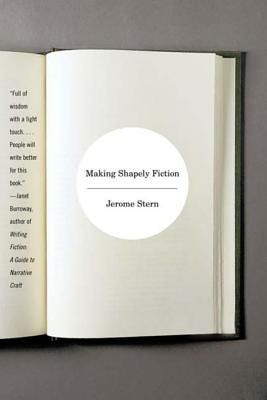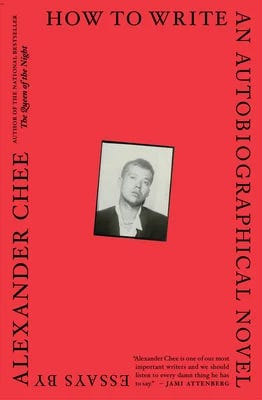How am I doing? How are you doing? How are we doing?
Picking up the pieces after the Marshall fire, craft books to spark your writing, and performance evaluations for writers
This month has passed in a blur so far. I kicked off the new year by teaching in a ten-day residency for the Mile High MFA, via Zoom, so we wouldn’t exchange cooties. But on December 30, the day before the residency started, I spent the hours anxiously watching the development of multiple grass fires that hurricane-force winds and record-breaking droughts had sparked around town.
As the Marshall Fire spread, I listened to the Boulder County Sheriff and Fire scanner and used Google maps to chart the addresses that the dispatcher called out. Amid the chaos, this was the only way to figure out how close the fire was getting to my house, and to learn what escape routes were closed off. (It gave me queasy echoes of the same vigil I’d kept during the 2013 floods that inundated our home and blocked off the surrounding roadways.)
In my neighborhood, the wind howled, tearing off tree branches and pulling up entire pine trees at the root like dandelions. I tried to keep my scanner monitoring away from my kids, but I assigned them each something to gather if we needed to evacuate—my daughter would pack up the rabbit, and my son would grab his guitar. There would be no way to save the piano.
We later learned that one of my kids’ piano teacher’s friends lost her house and with it her Steinway piano, along with all her annotated piano scores from years of teaching. I wonder if the piano made any sound when it burned.
The evacuation and pre-evacuation zones kept enlarging, until they extended to within a third of a mile from our house. But ultimately we didn’t have to flee. One of my colleagues at the Mile High MFA wasn’t so lucky. She had to evacuate her kids and dogs from her Louisville house. Her house wasn’t burned, but the heat and hot water were turned off for days, and she needed to inspect her attic for ash.
In the days to come, we learned about all the people who lost houses. Two teachers and three student families at my son’s school lost homes, as well as 60 more who had to evacuate. A similar number at my daughter’s school were impacted. I only had to drive three blocks from my house before the acrid scent of the charred landscape hit me. And then I learned that Michael, my bootcamp teacher, had also lost his apartment.
One of the craft lessons I taught my students at the writing residency was how to create vivid characters in nonfiction. Use at least one or two physical details—but you don’t have to describe them completely. Give us a few specific details that make this person unique. Let us hear how they talk, let us know something about their inner life, and let us see them in action. So I will try to evoke Michael for you as a character.
Michael is a fit man in his fifties who has red hair and fair skin. He grew up in the Seattle area. He once worked in video production—I know this because when I wore a Pearl Jam shirt to class, he told me that he worked on one of their videos, and that they were cool guys. Before the pandemic, he used to take a few trips every year to meet up with his contra dancing buddies. You can tell he’s a dancer from the speedy precision of his movements. He plays us an eclectic mix of music he loves while we work out, from Pink to the Beatles to Joy Division, to “Secret Agent Man,” the 1966 hit by Johnny Rivers that Michael often plays for us in the original and multiple cover versions.
Tammy, a lady in my class, figured out that Michael might have been affected by the fires and texted all of us after he confirmed that his apartment was lost. He didn’t have renter’s insurance. We all Venmoed him cash and texted condolences. We made plans to hold a gift shower for him once he found a home. Eight people offered him a place to stay.
Three days after he fled for his life and lost everything he owned, Michael showed up at 7:30 at the rec center as usual to teach our class. He led us through familiar exercises: squats, dead lifts, planks. He seemed like regular old Michael: businesslike, cheery, using a microphone to amplify his instructions, blasting “Secret Agent Man.” His voice didn’t crack until at the end of class when he thanked us for our help. “It’s like a collective hug,” he said. “Many of you have asked how you can help. The best thing for me is to to just keep teaching this class. So keep showing up.”
A few classes later, I asked Michael if he’d found a place to stay. He said he’d found a furnished apartment in north Boulder.
“Temporary or permanent?” I asked.
“I signed a lease through May,” he said.
“And are you all moved in already?” I asked.
“Yep,” he said. “I brought in my one duffle bag, so I’m all moved in.”
I thought about that duffle bag, which contained everything he possessed. “Now you’re a secret agent man,” I said.
Michael laughed.
And making Michael laugh felt like the best thing I’ve done in a long time.
Here is the GoFundMe for Michael.
Here’s the GoFundMe for Amy Austin, the amazing musical theater teacher at my kids’ middle school.
Here’s the GoFundMe for Steve Merschel, the brother of Michael Merschel, for whom I happily wrote book reviews at the Dallas Morning News for eight years.
As Westword reported, there are hundreds of other GoFundMe campaigns for Marshall Fire victims. You can find a list here.
The Assorted Whimsy Portion of The Tumbleweed
I’ll keep the assorted whimsy portion short and sweet this month. Here is my spirit meme:
I don’t know who @chOmkus is, but they clearly have peered into my soul.
The Book Review Portion of The Tumbleweed
Many of us harbor writing goals for the new year and my students at the residency asked me what craft books I’d recommend to inspire them to get back to the page.
A book I’ve loved for years is Making Shapely Fiction by Jerome Stern. I picked it up after Antonya Nelson recommended it at a talk she gave at Bread Loaf. It’s not a traditional writing manual; instead, it’s a collection of insightful craft definitions and structural techniques that you can flip through for inspiration. It’s a good one for those of us who feel oppressed when confronted with a “do XY and Z” kind of writing craft manual. One concept that has greatly impacted my work and teaching from Stern’s book is the idea of position changes. Check the book out and flip to the section titled “Position.” I bet you’ll read on.
Next I’d like to recommend a book that will be out March 8, Refuse to be Done by Matt Bell. (Preorder it here from Bookshop if you’d like.) It's a short guide, about 150 pages, with roughly 50 pages focusing on each of three drafts Bell proposes that novelists write. This is helpful, because I think that sometimes we writers pick up a craft manual when we're stuck and use it as a way to procrastinate. Bell will get you on your way back to the page quickly with some concrete ideas about what to do next in your drafting and revision process. This is a joyful book, which I think is helpful. There are parts of writing which are really a slog, but Bell shares how he brings good energy to all the phases of the draft, and wants to extend the revising experience to make the book the best it can be.
Finally, last week I had my students read “The Writing Life” from Alexander Chee’s fabulous essay collection How to Write an Autobiographical Novel. He writes about taking a class from Annie Dillard, shares the advice she gave, and enacts her advice within the crafting of the piece.
The Q&A Portion of The Tumbleweed
After last semester ended, I received a question from a student unlike any I’d gotten before. The student, who spent a successful career in the business world before pursuing her MFA, was basically asking me to provide her with a performance evaluation. Now, we arts-and-leisure types normally don’t seek out performance evaluations. What would my own evaluation possibly be like? I shudder to think. Too many naps. Too many digressions. Not everyone thinks that is funny.
But this student might be onto something. Maybe it is a good idea, at the end of a semester, project, or year, to take a moment to reflect on how your writing is going, and commit to what you’d like to improve for the next year. If you’re brave, you could ask a writing buddy, teacher, or mentor to do this, but you can also just do it yourself—write a page in your notebook about it.
Here’s what she asked, and here are some of my answers—not the personal ones, but the general ones that apply to any writer.
Q. What are my development points as a writer? What areas should I improve to become a better writer?
A: At a certain point, I don't think that a writer should focus on improving in general as a “writer.” Rather, they should focus on improving a particular piece of writing. That is, when I was starting out, I read a lot of writing manuals, and I liked to do writing exercises and prompts to work on different techniques, and I also gave myself page or time goals. But eventually, you've done enough of that, and you should just focus on the project you're working on (unless those things are helpful or fun for you).
For me, with each book, I pick a new technical challenge to work on—multiple timelines, alternating narrators, etc. I think with each new project, we become beginners again, dealing with a new set of problems we have to solve to complete a book.
Q: Compared to other students, where would you assess my work? Am I middle of the road? Advanced or one of the better ones? Or lots of work to do?
A: First, I assured her that she’s a great writer—without ranking my students, which would make me sad. I’m not out to rank the writers I work with! They are all lovely.
It isn’t a question of writer vs. writer. It’s a question of each writer vs. the task at hand.
Then I told her that I think the only way to judge, really, is through whether or not you can finish your manuscript. Some people produce a manuscript that's 75-80% ready for submission in the two years I work with them. (And indeed, three students I've had in the past 5 years whose manuscripts looked like that already have book publications.) Others can't quite get there—they leave gaps in their novel, or there's a big problem that they haven't fixed, like slipping between verb tenses or just refusing to fix something that their mentors have pointed out. So I think putting together the complete manuscript and seeing their story all the way through to the end, and being willing to revise is one quality that separates writers who will publish from those that won’t.
That said, I've had certain students whose thesis manuscripts blew me away, but then they just didn't have it in them to submit enough and endure enough rejection to get it published. We're talking years of submissions, hundreds of rejections, and most likely moving on to the next project before an acceptance comes. A lot of people give up before then.
So that’s it, for me—that’s the key to what separates a writer who publishes from one who doesn’t—finishing the book, and persisting through rejection.
Have a question? Leave a comment or send me an email.
The Self-Promotional Portion of The Tumbleweed
With omicron surging, I wasn’t feeling comfortable inviting you all to come out to my reading at the Tattered Cover next week, so we pushed it back to Wednesday, March 2 at the Tattered Cover Colfax. I am keeping all my fingers crossed that the current pandemic wave will break before then, and I will be delighted to see you all there!
Arsen Kashkashian and Maeve Conran treated me to one of the best discussions I’ve ever had about my work for the KGNU & Boulder Book Store Radio Book Club. If you enjoy the part that aired on KGNU, there’s even more, on Afterhours at the Radio Book Club.
And I even gabbed some more, with my dear friend Gessy Alvarez, on her Digging Through podcast.
I got to review Neel Patel’s lovely novel Tell Me How to Be for the Minneapolis Star Tribune.







Yes, so very true. Persistence wins. "We're talking years of submissions, hundreds of rejections, and most likely moving on to the next project before an acceptance comes."